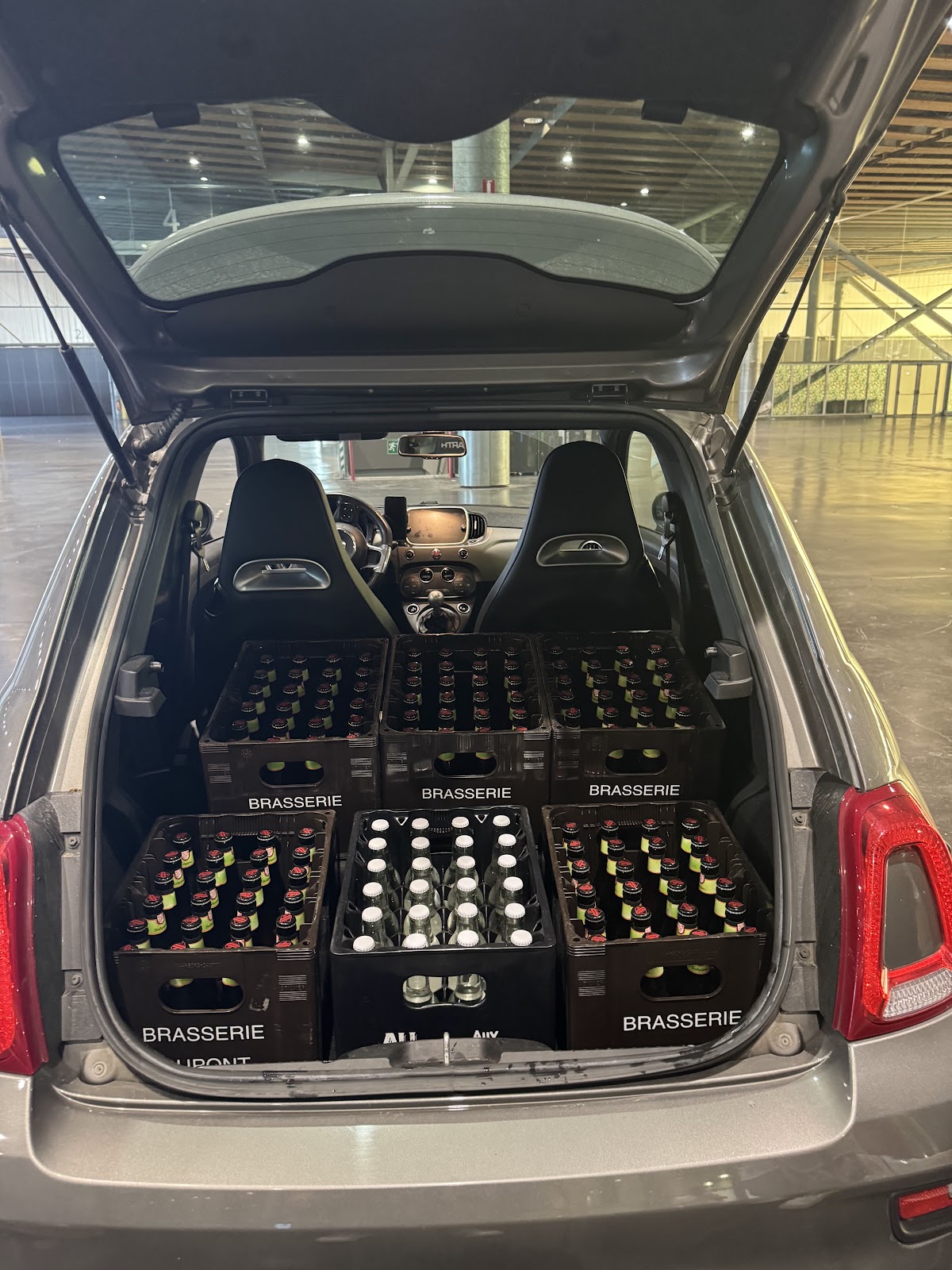Salut les amis,
Comment ça commence?
Un soir, un Mardi 6 Mai 20h57, tu reçois un mail de Fanny Demey, avec ce titre:
Je te passe les détails du mail beaucoup trop TOP SECRET, bon ok, en substance, Fanny nous propose de sponsoriser la keynote de fermeture animé par Ludovic en offrant une bière ou un soft aux participants dans une "petite" salle de 400 personnes pour un budget probable de 300€.
Voici la réaction de l'équipe sur notre slack:N'oublions pas que le slogan du Jug est "In java an Beer we trust", ca nous parait bien matcher 😀
On est tous super emballés, on a un peu de trésorerie, "lezzzzzz go" comme disent les djeuns.
On s'organise comment?
On commence à se demander comment on va gérer la chose. Le point clé c'est d'avoir le jour J à l'heure H et devant la salle, un gros paquet de bières et de soft.
Allez, je m'auto balance, je voulais initialement tout déléguer aux organisateurs de DevLille 😂
Acheter 400 bières et soft
Ludovic, speaker de la keynote, qui est dans les échanges de mail, a aussi un coup de chaud.
On tombe finalement d'accord pour quasiment 200 bières et 50 limonades pour un devis d'à peu près 600€. deal (Spoiler alert: c'était encore beaucoup trop 😂).
La veille de la conférence
Un moment de convivialité est organisé par les organisateurs avec les speakers la veille de la conférence. Je croise Emmanuel et Ludovic, on parle de cette fameuse session de clôture, on sent que ça peut être vraiment chouette et en même temps on se pose plein de questions:
- Y aura t-il du monde?
- Est-ce que ca sera convivial?
- Est-ce qu'on arrivera à faire un truc assez interactif
- Est-ce que les bières seront fraiches 😀
- Wait and see...
C'est parti, DevLille commence!
La bonne nouvelle c'est que Thomas nous informe que les boissons sont déjà sur place:
Vendredi, dernière session
Au vu des gens présents et qui arrivent encore, on se dit que sur les quantités, on est bon. même très large ;-)
On découvre le contenu réel de la session en même temps que tout le monde, Ludovic a prévu pas mal de sondage live et de donner la parole à l'assemblée. L'ambiance est décontractée, c'est convivial, ça rigole, les gens ont envie de prendre la parole.
Il n'est pas beau ce petit setup?!
On avait 4 micros mains à disposition, l'équipe du Ch'ti JUG se met au service. On passe dans tous l'amphi avec les micros et comme il reste pas mal de boissons, on propose d'apporter une 2e boissons à ceux qui ont très soif.
Je me suis retrouvé à un moment avec deux bières dans la main gauche et 2 micros dans la main droite et je me suis trompé, au lieu de donner un micro, j'ai donné une bière. La personne n'a pas dit non 😂
Le temps passe très vite, c'est déjà la fin.
Tout le monde ramène gentiment sa consigne à la fin, la salle est propre.
Epilogue
"Et les gars, ils nous restent pleins de boissons, on fait quoi????"




























